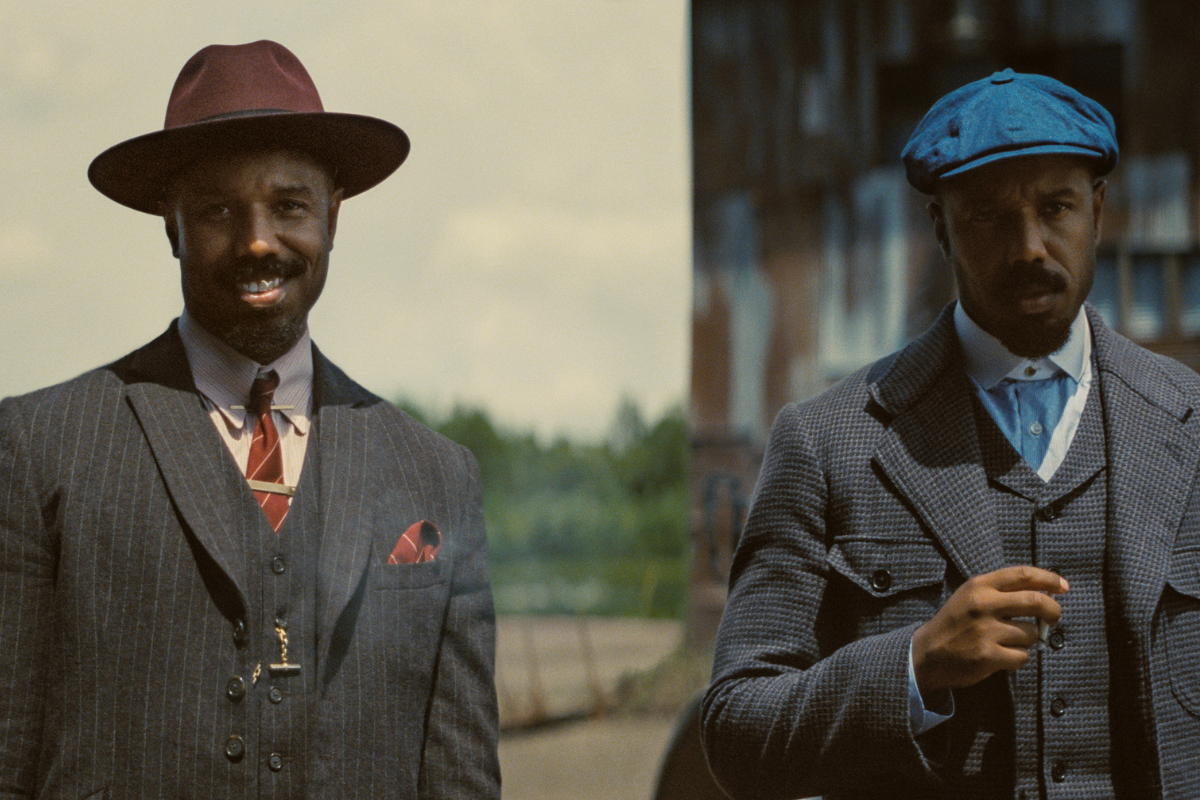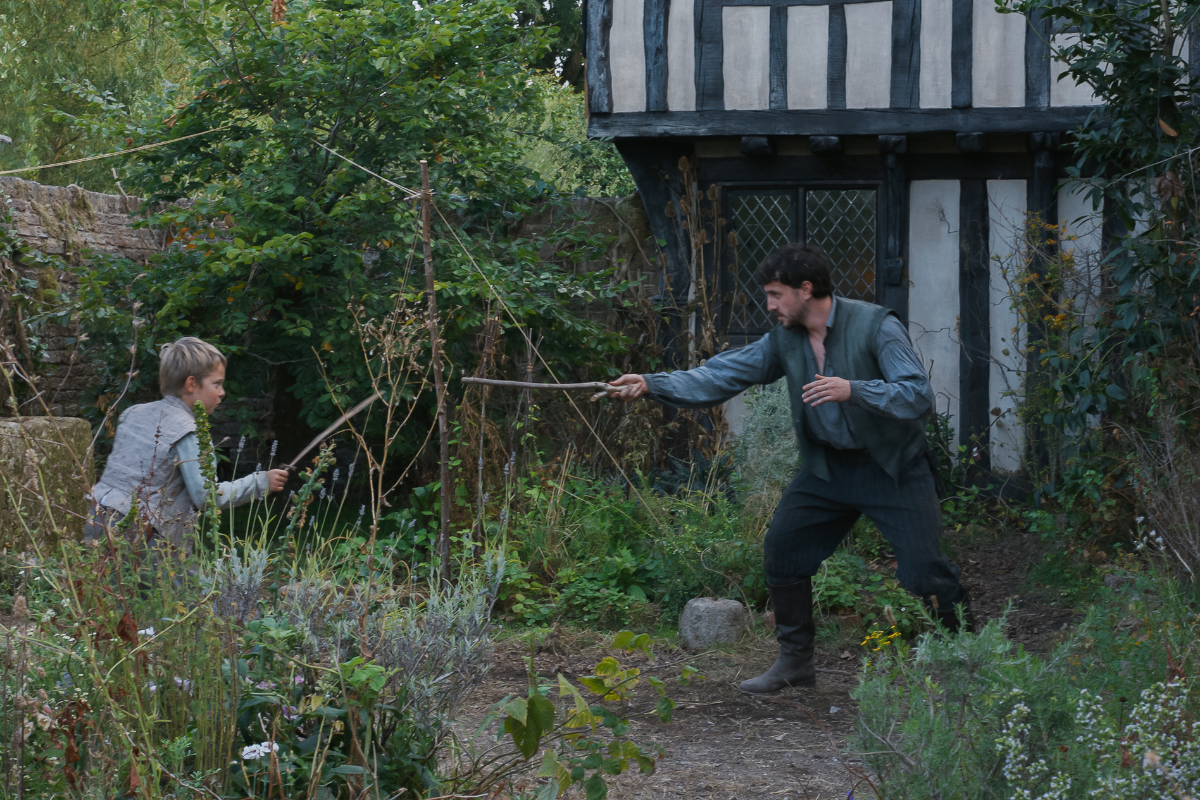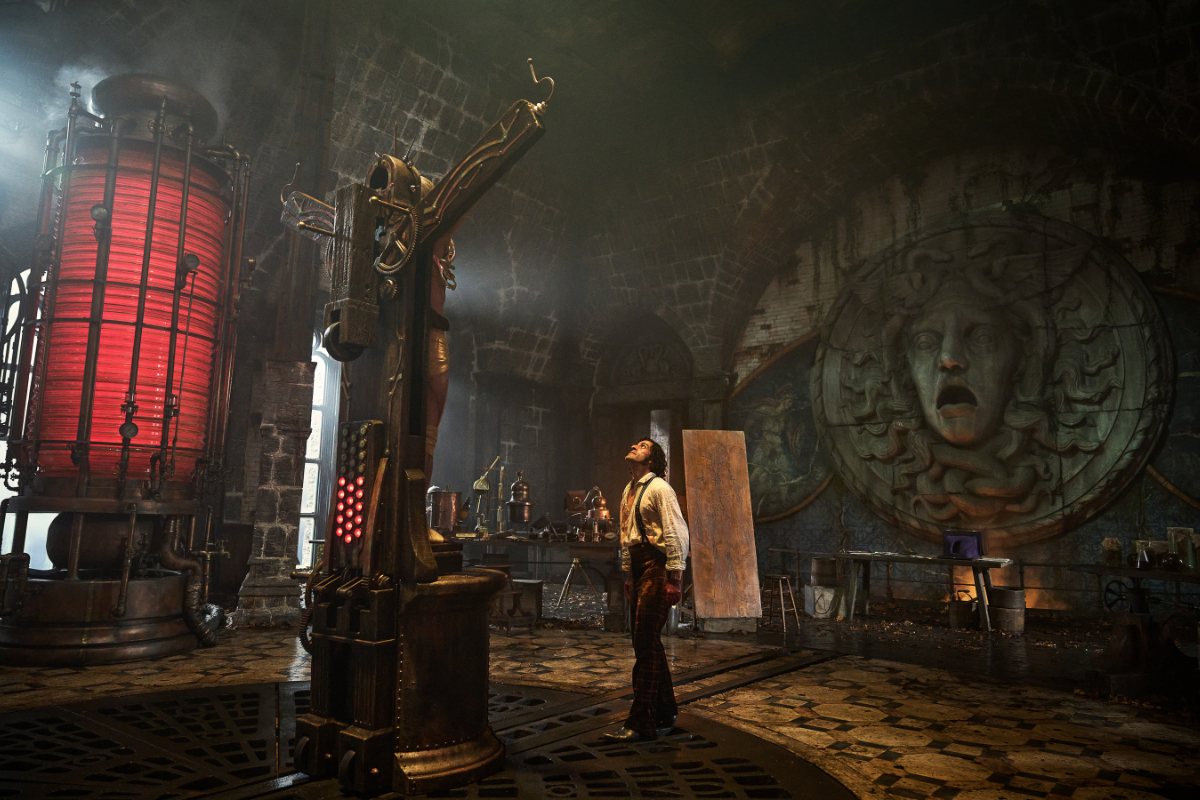The Tao of ‘Twin Peaks’
David Lynch was determined to reframe the obstacles he dealt with making the series into opportunities to keep Twin Peaks alive in the collective minds of the viewing public.
Filmmaker David Lynch passed away earlier this year, leaving a void in the artistic community like no other. He was the reason I wanted to become a filmmaker and ultimately attended the American Film Institute, his alma mater, to learn the craft of writing and directing. Lynch was an anomaly in Hollywood, one of the few filmmakers who was able to work within the system without compromising his artistic vision—at least, most of the time. While creative freedom was usually afforded to him, he butted up against studio interference over the final edit of Dune and encountered network pressure to reveal Laura Palmer’s killer in the original series of Twin Peaks. In both instances, the intervention of systemic forces led to negative results: Dune was a box-office flop and Twin Peaks got cancelled. However, in the case of Twin Peaks, Lynch was determined to reframe the obstacles he dealt with making the series into opportunities to keep Twin Peaks alive in the collective minds of the viewing public.
In other words, Lynch hadn’t completed his artistic goals with Twin Peaks; he hadn’t fully realized his theme on screen, and was compelled to do so in 1991 in the form of Twin Peaks: Fire Walk with Me.
While Twin Peaks, the original series, and Twin Peaks: Fire Walk with Me, the movie prequel, exist in the same canon, they exhibit starkly different tones. So much so, that many diehard fans of the show were disappointed with, if not repulsed by, the film and, as a result, its release marked the beginning of a career slump for Lynch. While Lynch may not have planned to make this movie when he conceived the original series, it became necessary for him after the show ended. This was due to his artistic adherence to theme, which stems from the idea, not from a desire to please fans.
In myriad ways, the original incarnation of Twin Peaks in 1990 was a groundbreaker in serialized entertainment. For example, the show suspends its “set-up.” In screenwriting terms, the set-up introduces the main character and presents their world, their state of equilibrium, before it gets disrupted by a dramatic event that occurs at the end of Act I. This is the ground in which the seed of the main character’s flaw is planted, which then grows throughout the story, and is eventually addressed by the end. Typically, this set-up occurs prior to the catalyst or inciting incident, as this is the event that presents a change to the status quo.
The opening of the pilot episode of Twin Peaks is essentially the show’s catalyst, bypassing the set-up entirely. This inciting incident has gone down as one of the most iconic and influential plot points in television history: the discovery of Laura Palmer’s body. Pete Martell’s words to Sheriff Truman over the phone, in his Lynchian drawl, continue to echo in our ears: “She’s dead. Wrapped in plastic.”
In this case, what would usually be considered the set-up happens after the inciting incident, which adds dramatic irony to what unfolds. When we meet the characters of this quirky northwestern town, it is under the specter of the discovery of this dead girl; however, apart from Pete Martell and Sheriff Truman, only the audience is aware of the tragedy. This type of Hitchcockian suspense—we know, they don’t—sends chills up our spines as we wait for the news to hit and ready ourselves to witness the reactions of the victim’s family and friends. Their world has been turned upside down, they just don’t know it yet.
Through quick and clever exposition in the scenes that follow the body’s discovery, we meet Laura’s mother, father, best friend, boyfriend, secret boyfriend, among others. Lynch and Mark Frost, the show’s co-creator, establish an immediate emotional connection to these characters, and we’ve barely just met them. We place ourselves in their positions, recognize their town as our town, and ask ourselves, what if I were to get the news that my daughter died, that my best friend died, that my girlfriend died… If this were a plot-driven procedural, like Law & Order, we would get the dead body at the beginning and the investigation immediately after. We meet the cops and begin investigating; we don’t start getting to know the peripheral characters who may or may not have anything to do with the crime. The notion of subverting the conventions of what, on its surface, seemed like a police procedural was truly unique at the time. Lynch didn’t focus on the objective investigation of the crime, but rather on the subjective reactions to the victim of the crime.
In a truly heartbreaking scene, Leland Palmer is on the phone with his wife, Sarah, who is looking for their daughter, as Sheriff Truman arrives at the Great Northern Hotel where Leland works. Leland’s acknowledgement of the Sheriff is clue enough to Sarah that something is terribly wrong and, for both, confirmation enough that Laura is dead. Lynch intentionally skips over the cliché of the cop breaking the news to the family and merely portrays the family as intuiting the news, as Leland states “my daughter’s dead” having never been told that fact (based on what we’re shown on screen). In this moment, Lynch seems to be declaring that this is a cop show minus the focus on the cops. This is a story about people. We don’t even meet our main character, Special Agent Dale Cooper, until the beginning of Act II. His set-up—his state of equilibrium, character flaws, reaction to the catalyst—happens off-screen. Lynch withholds these details from us in favor of focusing on the people emotionally affected by Laura’s death.
Lynch had envisioned the story of Twin Peaks as open-ended, the murder of Laura Palmer as a MacGuffin of sorts, a trick that steered the show into the storylines of its supporting characters. He never planned to reveal the literal “who” in the question, “who killed Laura Palmer?” The character of Laura Palmer in the television show was a screenwriting device—she was the catalyst that sparked the entire series. Her murder brought Agent Cooper to Twin Peaks. Her murder brought the storylines of everyone else in town into the light. Her murder was the mystery that spawned countless other mysteries; at least, that’s what was supposed to happen. Lynch had intended for her murder, and the subsequent investigation, to fade into the background as the background took center stage. However, due to mounting public pressure, the network forced Lynch to maintain the show’s focus on the investigation and reveal the murderer to the audience early in the second season. And this reveal essentially killed the show.
Laura’s presence—as solidified in the pilot’s landmark opening sequence—was so powerful and fully realized that viewers connected deeply to it. The shot of Laura’s empty desk in her high school classroom as students begin to realize something terrible has happened to her is so effective it brings tears to my eyes every time I watch, and I suspect this scene affects others similarly. Her presence, as depicted through her absence, was so intriguing to viewers that they couldn’t let her just fade into the background, for better or worse. And, apparently, Lynch couldn’t let her fade into the background either, despite his original intentions.
After the series was cancelled, David Lynch sought to bring the memory of Laura Palmer to life on-screen in his film Twin Peaks: Fire Walk with Me. This wasn’t merely because we didn’t see enough of her in the series; rather, it was because we didn’t see any of her at all. What we saw of her in the series was a plot point. Laura Palmer was the seed that grew into the tree of Twin Peaks. The tree and its branches were the show’s storylines and the characters sprouted from those storylines, but Laura Palmer herself remained underground. The prequel was Lynch’s attempt to humanize this plot point, to place flesh upon the bones of this screenwriting device. Despite a vitriolic reaction at the Cannes Film Festival and scathing reviews by critics, Fire Walk with Me is a searing, uncompromising and truthful portrait of a young woman struggling to survive a life in which her father abuses her while her mother ignores the behavior. This film is Laura Palmer’s subjective experience of growing up under such conditions and it provides the lens through which the audience views her reality: an incest survivor whose reality is distorted.
As he approached the making of this film, Lynch knew it had to end with the death of his beloved character; the character he was now bringing back to life on the screen, however briefly. The working title of the film included the subtitle: the Last Seven Days of Laura Palmer. The irony of bringing her back to life on-screen is that Lynch is bringing her back to the worst days of her life: the week she sees through the illusion of Bob—a self-defense mechanism that shields her from the identity of her perpetrator—and recognizes her father as her rapist. It’s a kind of torture for the character. While some have accused Lynch of being a sadist, I believe he was the furthest thing from it.
What was Lynch’s ultimate purpose in staging such a horror? He created one of the most successful and influential television series in history, however short-lived, so why risk potentially alienating his audience by making a prequel that dispenses with most of the series’ signature quirk and levity to focus solely on the darkness beneath the surface of the show?
It all comes back to his overarching theme: the importance of balance, and this case, the balance between the light and the dark; the good and the bad. This is a central theme that Lynch explores in most of his work. It’s most recognizable in his film Blue Velvet, which opens in the white picket-fenced, bright, blue-skied picture-perfect suburbs. After viewers are introduced to this idealized portrayal of everyday life, the film subverts our expectations. The camera descends past the blades of grass, down into the dirt below, and finally, to a mass of insects fighting in the dark. This scene is an indication not to accept the superficial perfection before our eyes because there is a darkness lurking below the surface.
In the television series, Lynch explored the consequences of abuse and how most characters refused to look at it, focusing on the white picket fence and not what was happening behind it. He hinted at what was below the surface, but he could only depict so much on network television. Laura Palmer was dead, and all Lynch could allow the viewer was a glimpse of her life from the outside, like the other characters on the show. It was peripheral; it was an outside-looking-in approach. In the prequel film, however, he explored what abuse feels like. He placed the film inside Laura Palmer’s first-person point of view as she experienced the abuse. It was an inside-looking-out approach. He needed to make this film as a counterpoint to the series, as a means of exploring the subject matter from both sides. In other words, consider Fire Walk with Me the yin to the original series’ yang.
The character of Laura Palmer, her state of being, was out of balance after the series. Fire Walk with Me rectifies this, eliminating the humor and lightheartedness present in the original show and confronting head-on the horrors of Laura’s abuse and how it destroyed her. This was a necessary step for Lynch to take and speaks to the Tao of Twin Peaks: to examine and consequently appreciate the light/good, we must also examine and, to an extent, understand the dark/bad before we are able to go back and live in the light on the side of the good. One side cannot exist without the other, therefore neither side can be ignored.
There are some people, particularly critics, who find Fire Walk with Me to be one of David Lynch’s more difficult films. I agree it’s one of his more difficult films to experience emotionally, but not to understand. While the series remains a foundation for the film, and its symbols are present, the film is as realistic in its subjectivity as it can possibly be. Lynch once again employs dramatic irony, as we are fully aware from the start that Leland Palmer is Laura Palmer’s abuser and that she will die at his hands. But Laura doesn’t know this. Perhaps audiences were taken aback because there were no investigations for us to undertake, Lynch having completely removed any semblance of the show’s police procedural conventions. In fact, Agent Cooper is barely even in the movie, and he’s not investigating anything outside the disappearance of Agent Chet Desmond, a character that Lynch and Frost created as a substitute for Cooper since Kyle MacLachlan declined to play a large role.
Our hearts break for Laura Palmer as we watch her discover and come to grips with what we’ve already discovered and have been coming to grips with over the course of watching the series. It is a brutal experience, but also a profound one. Through his trademark blend of surrealism and expressionism, Lynch allows us to experience the abuse and its effects as Laura experiences them. He makes us stand witness to the crimes and corruption of this person’s life; it hopefully sparks anger inside us, anger at a society that can turn a blind eye to such things in the name of being taboo or considered hard to look at—just like the characters in the show, and perhaps a portion of the show’s audience, who glossed over the darker facts and tuned in primarily for its quirkiness, absurdist humor, and weirdness to discuss over the water-cooler. Lynch has said, “The home is a place where things can go wrong,” and most of his work explores this idea, particularly Twin Peaks.
At Laura Palmer’s graveside funeral in the series, Laura’s ex-boyfriend, Bobby Briggs, bursts out yelling: “Everybody knew she was in trouble, but we didn’t do anything. You want to know who killed Laura? You did. We all did.” Perhaps this speaks to the collective denial—both the characters’ and ours—of what was happening, specifically the incest and murder of a young girl at the hands of her father, who on the surface, is a pillar of his community. This critique is most severe when we consider Sarah Palmer’s denial and her selective memory, which sought to ignore what was happening under her nose. We, as a society, did kill Laura Palmer; we don’t want to confront such abhorrence, so we choose not to. It is the desire to maintain those freshly painted white picket fences by keeping the darkness corralled within them that has led to more harm inside, and outside, of the home. The act of containing such darkness, confining it within the walls, itself is incestuous; not letting the light of the world into this closed off realm of the house. It is the house as a prison and its white picket fence as the bars.
Fire Walk with Me was Lynch’s opportunity to expose viewers to the truth of what was happening to Laura. In Blue Velvet, he was able to present a balanced examination of the light and dark in one film; however, in the original run of Twin Peaks, the show was unable to achieve such a balance. It was the darkness beneath the surface in Blue Velvet that he couldn’t explore through the medium of television in the early nineties. Fire Walk with Me and its uncompromising account of abuse, rape, and incest is a necessary companion piece to the first two seasons of Twin Peaks, as it exists to balance what the characters, and audience, were initially presented with. The fact that some audience members at the time, and perhaps even still today, couldn’t reconcile the opposing tones of the original series with the movie speaks to the need to balance opposites. The path toward understanding Lynch and his material is through his fundamental theme of balance and achieving it through our understanding that everything exists in relation to its opposite. This is the Tao of Twin Peaks.
If you’d like to take a deeper dive into Lynch’s filmmaking and the meaning behind this masterwork, please check out my book The Tao of Twin Peaks, now available in hardcover, paperback, and eBook versions.
Find William online: Website www.williamdickersonfilmmaker.com | Facebook @WDFilmmaker | X @WDFilmmaker | Instagram @WDFilmmaker







